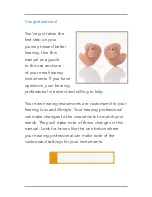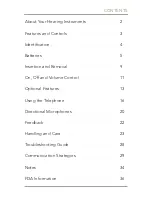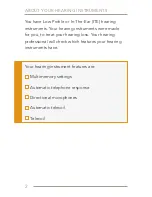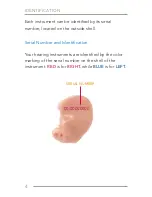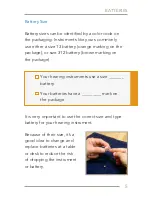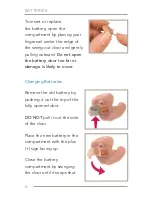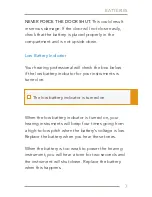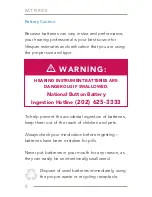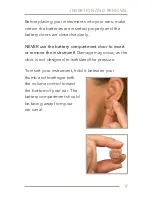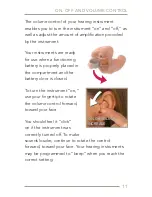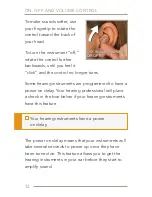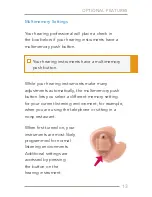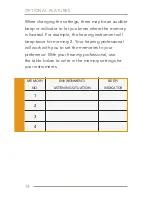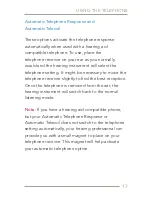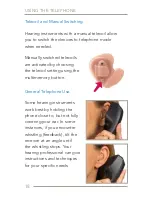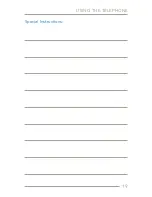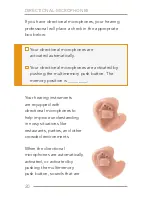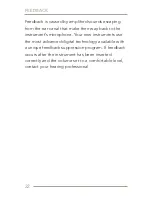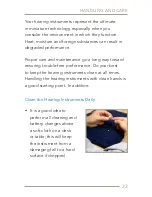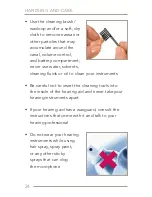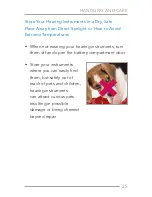
10
Gently push the instrument
in until it is resting
comfortably inside
your canal.
Gently rotate the instrument
until it is comfortably set
inside the bowl of your ear.
Pull your earlobe down slightly and press on the
instrument to ensure it is
firmly in place.
To remove your ITE,
grasp the instrument with
your thumb and forefinger,
and gently rotate it as you
pull outward.
insertiOn and reMOVal
Summary of Contents for Destiny
Page 1: ...ITE O p e r at i o n s M a n u a l In The Ear ...
Page 17: ...15 Special Instructions Optional Features ...
Page 21: ...19 Special Instructions Using The Telephone ...
Page 36: ...34 Notes ...
Page 37: ...35 Notes ...


